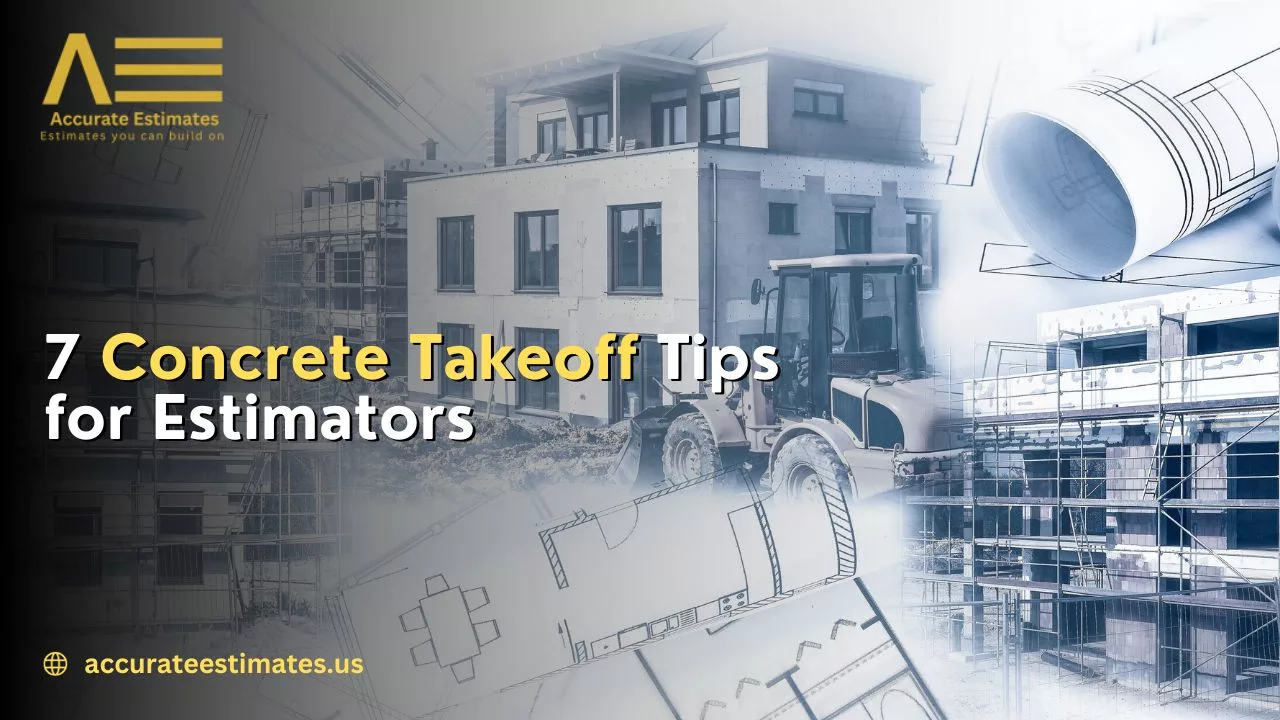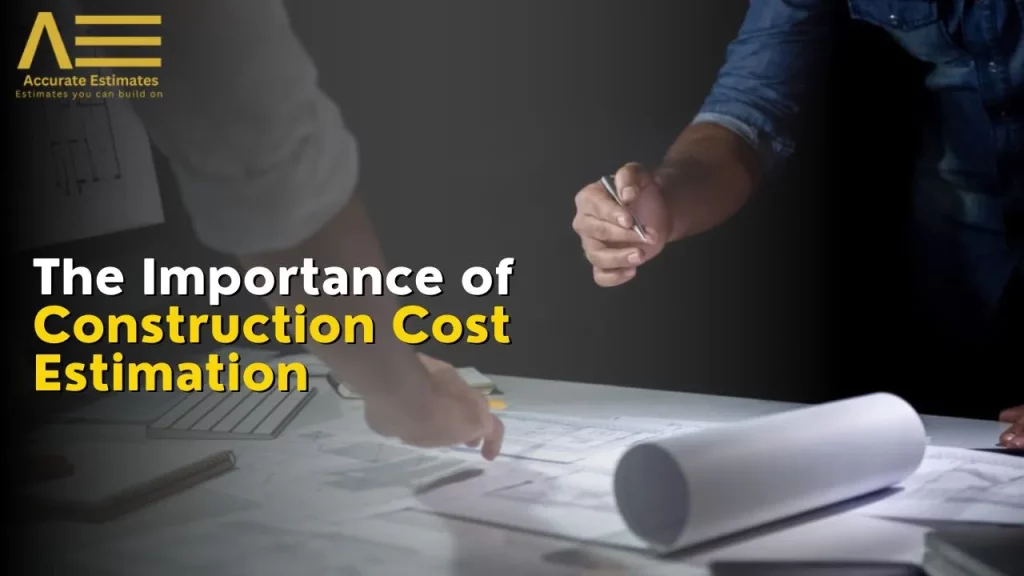7 Concrete Takeoff Tips for Estimators

Table of Contents
In construction estimating, getting an accurate and efficient concrete takeoff is crucial. Estimators play a pivotal role in determining project costs, and having a well-defined strategy for concrete takeoffs can significantly impact the success of a construction project. Whether you’re an experienced estimator or just starting in the field, these seven concrete takeoff tips will help you streamline the process and improve the accuracy of your bids.
Concrete takeoff is the foundation of any construction project, and as estimators, your goal is to provide an accurate assessment of the required materials and labor costs. In this article, we will explore seven concrete takeoff tips that will help you excel in this critical aspect of construction estimating. Whether you’re working on a small residential project or a significant commercial development, these tips will guide you in making precise bids and ensuring project success.
Consider utilising professional concrete takeoff services to save time and ensure precision in your concrete takeoffs. They can help streamline the process and provide you with accurate estimates.
Understanding Concrete Takeoff
The Importance of Accurate Takeoffs
Accurate concrete takeoffs are the cornerstone of a successful project. They are the basis for determining material quantities, labor requirements, and, ultimately, the construction cost. An imprecise construction takeoff can lead to underbidding, financial losses, or delays, which no contractor or client desires. Here are top concrete takeoff tips for contractors.
1. Gather Detailed Project Information
Site Plans and Drawings
Begin by collecting comprehensive project information. Study the site plans and architectural drawings provided to you. These documents offer invaluable insights into the project scope, layout, and structural elements.
Architectural and Structural Plans
Review both architectural and structural plans. The architectural plans will help you identify areas that require decorative concrete, while the structural methods will reveal the thickness and strength requirements for various concrete elements.
2. Utilize Takeoff Software
Benefits of Estimating Software
Invest in estimating software to streamline the takeoff process. These tools allow you to input measurements, calculate quantities, and generate reports efficiently. They also provide templates for common concrete elements, saving time and reducing errors.
Learning Curve and Training
Keep in mind that while takeoff software can significantly boost productivity, there may be a learning curve involved. Dedicate time to training and familiarizing yourself with the software to maximize its potential.
3. Break Down the Project
Categorize Concrete Elements
Categorize the concrete elements by type, such as slabs, walls, footings, or columns. This division simplifies the takeoff process and ensures you don’t overlook any crucial components.
Measure Linear and Square Footage
Measure linear footage for linear elements like walls and curbs and square footage for flat features like slabs and floors. Accurate measurements are the key to precise takeoffs.
4. Consider Material and Labor Costs
Material Pricing
Research and stay updated on material prices. Accurate material pricing is essential to estimate costs realistically. Consider sourcing materials locally for cost savings.
Labor Costs and Productivity
Factor in labor costs and productivity rates. Labor costs can vary significantly, so understand the local labor market and the efficiency of your workforce.
5. Apply Markup and Contingency
Markup for Profit
Determine your desired profit margin and apply markup to your estimate. This ensures that you’re covering your expenses and generating revenue.
Contingency for Uncertainties
Include a contingency allowance for unexpected circumstances or scope changes. A reasonable contingency can protect you from financial surprises.
6. Review and Refine Your Takeoff
Double-Check Quantities
Double-check your quantities and calculations to ensure accuracy. Errors can lead to costly overruns or underestimations.
Seek Expert Advice
When in doubt, consult with experienced estimators or industry experts. They can provide valuable insights and guidance.
7. Stay informed and updated
Industry Trends and Technologies
Stay informed about the latest industry trends and technologies. Embracing innovative methods can improve your accuracy and efficiency.
Networking and Knowledge Sharing
Connect with other estimators and construction professionals. Networking and sharing knowledge can lead to valuable tips and best practices.
Read More: Lumber Takeoff Guide
Conclusion
Accurate concrete takeoffs are the linchpin of successful estimating in the construction industry. By following these seven concrete takeoff tips, you’ll enhance your estimating skills and contribute to the overall success of your construction projects. Keep refining your approach, stay informed, and hone your craft.
Frequently Asked Questions
What is a concrete takeoff, and why is it important?
Concrete takeoff estimates the materials and labor required for a substantial construction project. It is essential because it forms the foundation of your project cost estimate. An accurate takeoff ensures you have enough materials and labor, minimizes the risk of overruns, and helps you submit competitive and profitable bids.
How can I gather comprehensive project information for my takeoff?
To gather comprehensive project information, review site plans architectural and structural drawings. These documents provide insights into the project’s scope, layout, and structural elements. Communicate with the project team, and don’t hesitate to ask questions for clarification. Thoroughly understanding the project details is crucial for an accurate takeoff.
What are the benefits of using estimating software for concrete takeoffs?
Estimating software streamlines the takeoff process by allowing you to input measurements, calculate quantities, and generate reports efficiently. It reduces errors, speeds up the estimation process, and offers templates for common concrete elements. While there may be a learning curve, the time saved and increased accuracy make it a valuable tool for estimators.
How do I categorize and measure different concrete elements?
Categorize concrete elements by types, such as slabs, walls, footings, or columns. To measure, use linear footage for linear features like walls and curbs and square footage for flat elements like slabs and floors. Precise measurements and categorization simplify the takeoff process and ensure everything is noticed.
Why is it crucial to consider material and labor costs in my estimates?
Material and labor costs represent a significant portion of your project expenses. To estimate costs realistically, you must research and stay updated on material prices and factor in local labor costs and productivity rates. Neglecting these can lead to inaccurate bids and potential financial losses.


